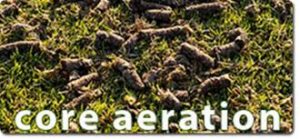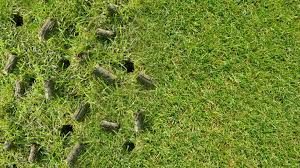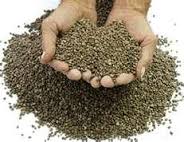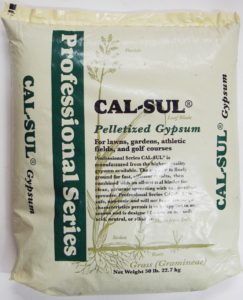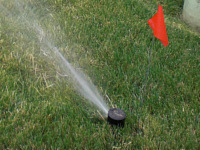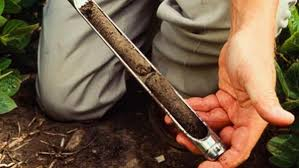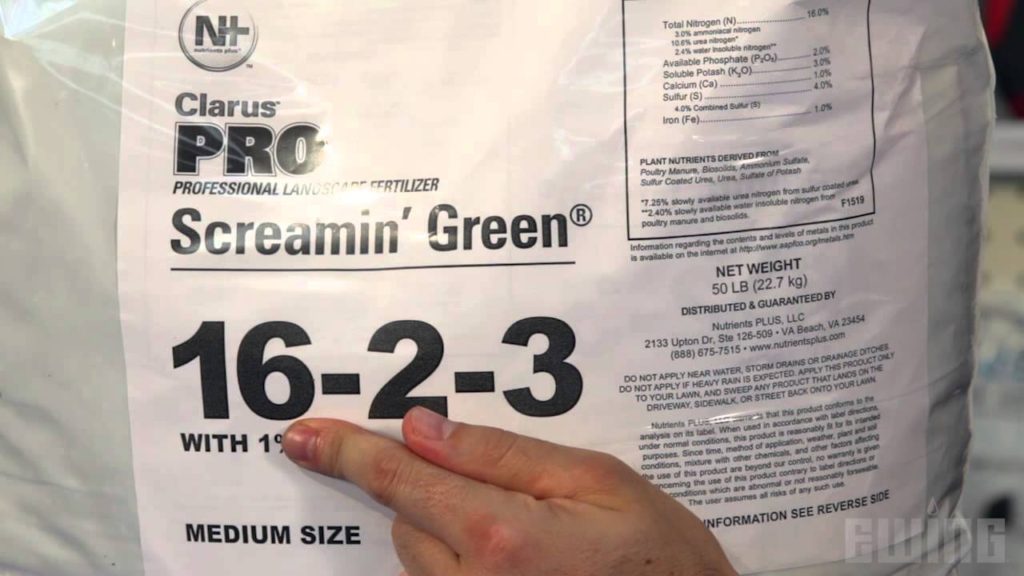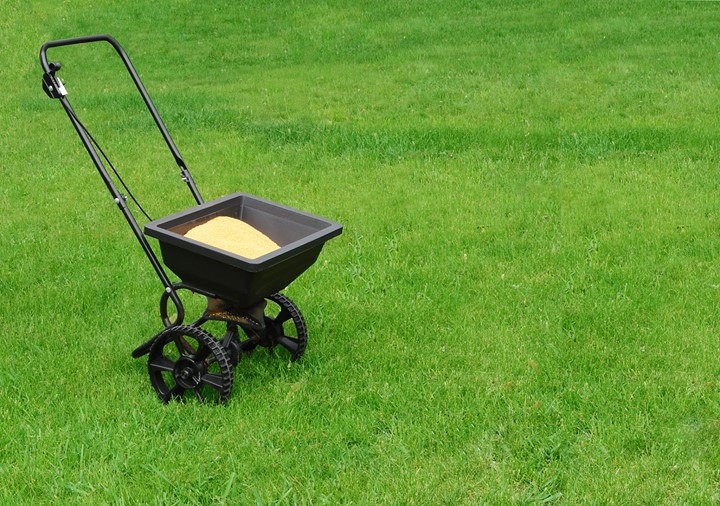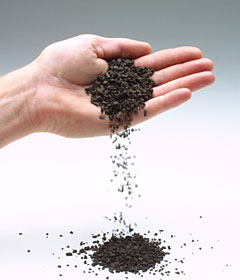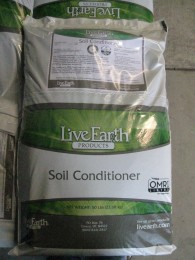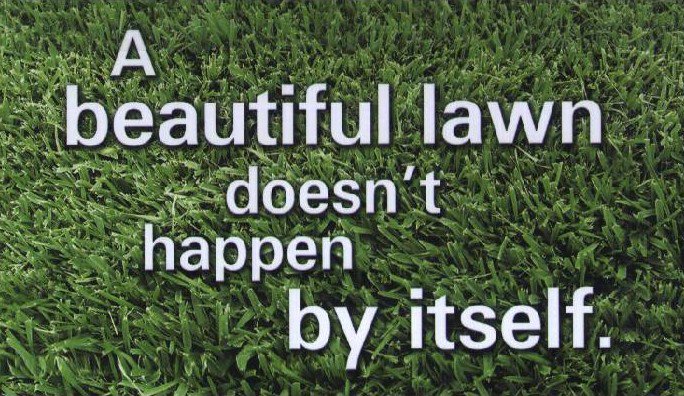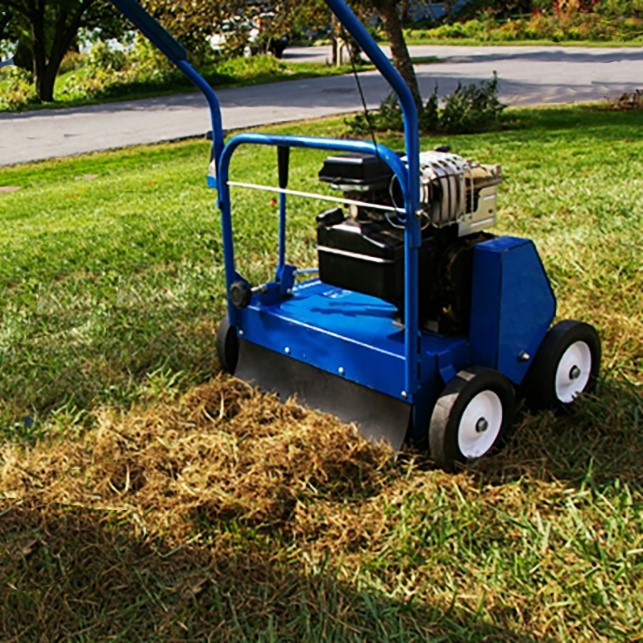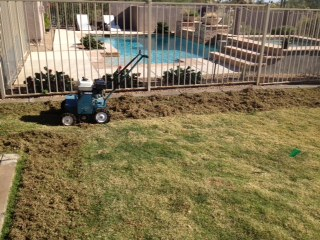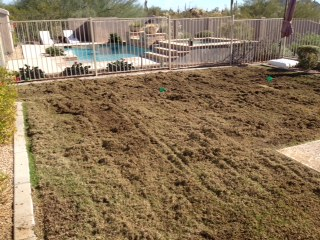Lawn Core Aeration
Lawn Aerating, Lawn Aeration, or Lawn Core Aeration is the process of mechanically removing small plugs of soil from the lawn to improve the flow of air, water, and nutrients. The aeration process is also called CORE AERATION in the service industry, and homeowners often refer to it as AERATING or AERATION.
Lawn Core Aeration Benefits:
- Saves up to 50% on Water!!!
- Reduces water run-off and puddling.
- Improves turf grass rooting and seed germination
- REDUCES SOIL COMPACTION
- Improves fertilizer and water uptake.
- Enhances heat and drought stress tolerance.
- Improves turf grass resiliency and cushioning.
- ENHANCES THATCH BREAKDOWN.
Lawn Soil Testing
Often the best lawn care practices will not be effective if your soil is out of balance and does not contain the necessary nutrients for optimum turf grass growth. We perform lawn soil testing, home soil test, or soil sample testing. Lawn soil testing is a vital part of any turf grass lawn maintenance program. Identifying your current soil composition and nutrient levels will help to develop a customized lawn care and treatment program.
What does a Lawn Soil Test measure?
A professional lawn soil testing analysis provides the following measurements:
Soil pH level. (potential Hydrogen): The soil pH is measured on a scale from 0-14. A reading of 7.0 is neutral. Anything below 7.0 is acidic and a reading above 7.0 is labeled alkaline. The desired pH level for turf grass is between 6.0 - 7.0
Nutrient content: Phosphorus, Potassium, Magnesium, Calcium, Sulfur, Zinc, Copper, Iron, and Boron.
Organic Matter: necessary for healthy soil and the primary food source for microorganisms to help promote turf growth.
CEC (Cation Exchange Capacity): This is a measure of your soil's capacity to hold nutrients.
Understanding the soil analysis report can be confusing and difficult. A simplified graph and problem analysis report is included with each soil test. Below is a sample soil test results graph:
How do I get a Lawn Soil Test?
Please complete the "Get a Quote Now" form on the Contact page with your property details. The Plugman will contact you to arrange a time to obtain small core samples from your lawn. These samples will be sent to an agronomy laboratory for analysis. The results take approximately 1-2 weeks. A detailed report is provided with a recommended treatment program to correct the soil imbalances and apply the proper soil amendments for an optimal turf grass maintenance program.
What is the price for a Lawn Soil Test?
Lawn Soil Tests are $75. Soil Testing includes: lawn soil sample procurement on your site, sending samples for testing and analysis, and a detailed summary report with findings and treatment recommendations.
Fertilizer & Soil Amendments
Nitrogen, phosphorus, and potash are known as the primary nutrients in lawn fertilizer and are often measured in the standardized N-P-K ratio. Nitrogen is by far the most important element for a lawn. It promotes rapid shoot growth and gives lawns a healthy green color. Most fertilizer recommendations for lawns are based on the amount of nitrogen to apply. Turfgrass needs less phosphorus than nitrogen, but phosphorus still is essential for strong root growth. Soil usually contains enough phosphorus for established lawns, but "starter fertilizers" can help new lawns with their higher phosphorus ratios. Potash strengthens lawn grasses, helping them to withstand traffic, resist diseases, and conserve water. Most lawn fertilizers are heavy on nitrogen, and light on phosphorus and potash. N-P-K ratios of 32-2-3 and 28-3-4 represent the percentage of nitrogen, phosphorus, and potash in a bag of fertilizer.
How much fertilizer to apply?
Watering leeches nitrogen out of the soil and makes the lawn grow fast. So if you water frequently, your lawn will need nitrogen. Lawns growing on sandy soils need more fertilizer than clay based soils. As a general rule, apply 3-4 lbs of fertilizer per 1000 square feet of Bermuda grass every 4-6 weeks between April and September. For established winter ryegrass lawns, apply 3-4 lbs of fertilizer every 4-6 weeks per 1000 sq./ft.
FERTILIZATION SERVICE
We use only slow-release granular fertilizers guaranteed not to burn your lawn. These will be applied throughout the growing season to insure a deep sustained greening of your lawn.
Fertilization + Soil Amendments Service Pricing:
Lawn fertilization/soil amendment applications are dependent on your lawn size. Contact us for a customized quote.
Gypsum and Soil Amendment Applications
LAWN GYPSUM
Gypsum is a natural soil amendment and fertilizer that helps to break up compacted soils. Gypsum improves water and fertilizer uptake in severely compacted soil conditions. The calcium found in gypsum helps lawn grasses absorb nutrients, so you get more results from periodic fertilizer treatments. Other benefits include:
- Enhances air and water exchange, improves drainage.
- Reduces soil cracking and crusting.
- Counteracts salt damage, replaces harmful sodium to allow for healthy growth of turf grasses.
- Adds vital nutrients - sulfate, sulfur, and soluble calcium.
- Reduces excessive runoff and erosion.
- Enhances positive bacterial action and discourages lawn diseases related to poor soil conditions.
The best time to apply Gypsum is immediately after lawn core aeration. The Gypsum pellets will fall directly into the aeration holes and work their magic deeper into the soil for more effectiveness.
Gypsum can be applied 2-3 times per year at a rate of 3-5 lbs./1,000 sq./Ft.
HUMATE SOIL CONDITIONER
Humate is a natural soil amendment that is equivalent of applying 1/2” of a high quality organic compost over the surface of your lawn. Benefits include:
- Stimulates the natural soil biology and nutrient availability in turf grasses.
- Humate is comprised of Humic Acid and Fulvic Acid, which are proven to build organic matter in soils.
- Allows water to penetrate compacted soils easier.
- Increases the soils capacity to retain water and reduce evaporation.
- REDUCES WATER and fertilizer requirements by 20-50%.
Humate Soil Conditioner can be applied 2-3 times per year at a rate of 3-5 lbs./1,000 sq./Ft.
Lawn Service
The Plugman Lawn Aeration and Landscape provides expert lawn services to Phoenix East Valley Communities including: Ahwatukee, Tempe, Chandler, Mesa, Gilbert, and Sun Lakes.
The Plugman Lawn Service Includes:
- Mowing of all lawn areas with a commercial rotary mower.
- Professional edging with a line trimmer for a manicured look.
- Blowing of all lawn borders, walkways, driveways, and patios.
- Sprinkler timer programming for seasonal adjustments.
- Lawn fertilizer and amendments applied at the appropriate times.
- Clippings will be placed in a sealed bag within your trash container.
Pricing for Lawn Service:
Our periodic lawn service pricing is based upon the size of your property. Please complete a Service Quote Request so we can prepare an estimate.
Lawn Dethatching
Thatch is a mat of plant material mainly of grass stems and roots. A thin layer (3/4 inch or less) is normal and does no harm. In fact, a thin layer protects the grass crown and helps to reduce soil compaction. Thatch that has accumulated thicker than 3/4" prevents water, fertilizer, and oxygen from reaching the roots.
What causes excess thatch?
- Over-watering and over-fertilizing
- Poorly aerated soil (highly compacted)
- Using high nitrogen based fertilizers
- Infrequent mowing cycles
Although regular core aeration on a yearly or biannual basis helps to control and prevent a heavy thatch layer, If your thatch layer is over 3/4", it should be removed with a dethatcher (verti-cutter) or power rake. Lawn dethatching or dethatching utilizes specialized machines that cut through the turf and pull up the thatch.
How to prevent lawn thatch problems:
- Mow frequently to maintain proper turf height.
- Avoid high nitrogen based fertilizers.
- CORE AERATE 1-2 times per year to open up thatch layers.
- Remove excessive thatch build-up with a power rake.
- AVOID EXCESSIVE WATERING!
When should lawns be Dethatched?
Dormant Bermuda lawns should be dethatched prior to the Spring green-up period (November-May) to remove the thatch build-up that has accumulated during the growing season. Early Spring dethatching helps to encourage Bermuda grass to come out of dormancy as temperatures climb into the 80's and 90's. In general, lawns can be dethatched anytime when the thatch layer has become greater than 3/4".
NOTE: DUE TO THE LACK OF LABOR RESOURCES, I CANNOT OFFER LAWN DETHATCHING AT THIS TIME.






